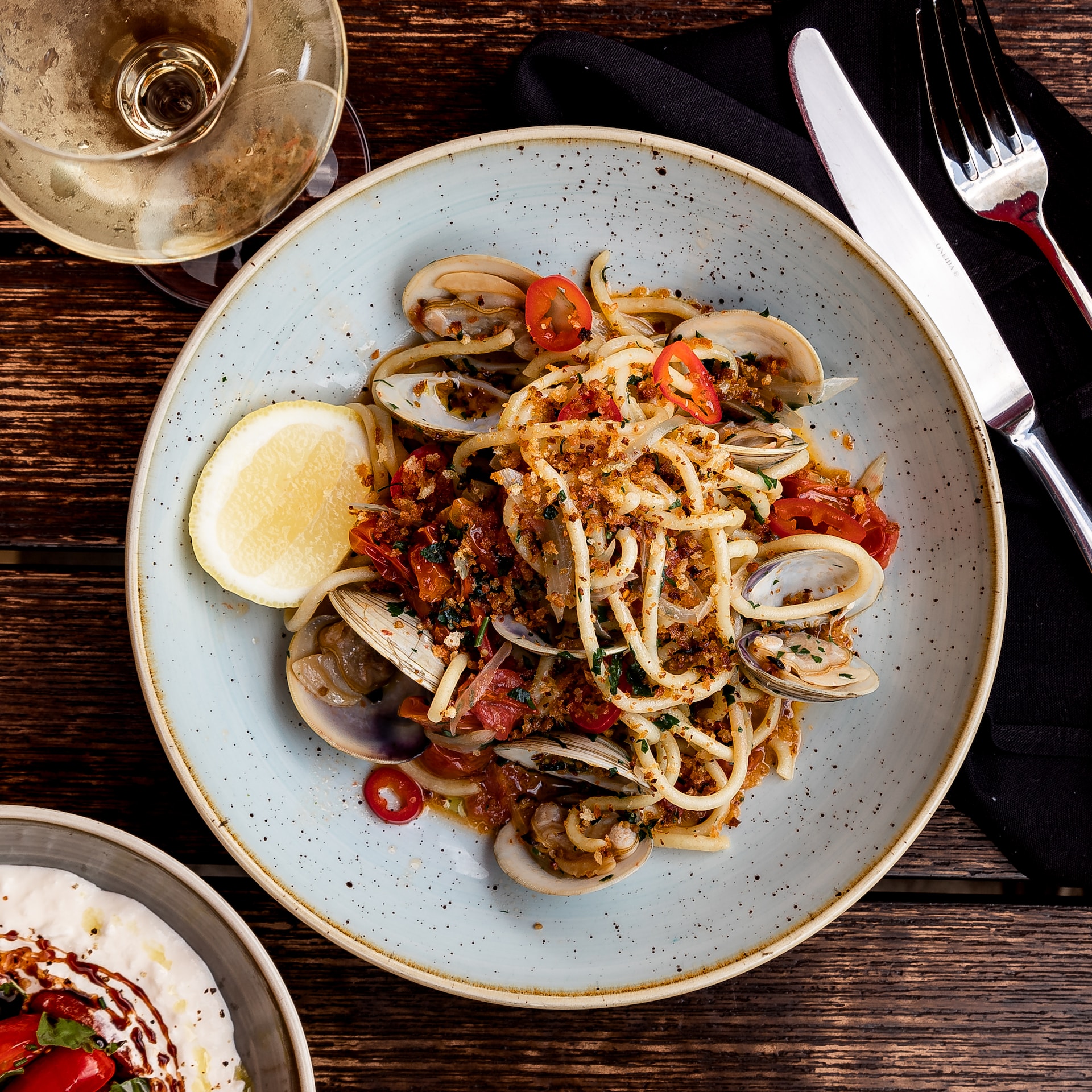Italian cuisine, renowned worldwide for its exquisite flavors and rich culinary history, transcends mere sustenance. It’s a way of life, an expression of culture, and a testament to the importance of balance in nutrition. As we embark on a journey through Italian food and nutrition, we’ll explore the foundations of this celebrated cuisine, its impact on health, and the secrets of the Mediterranean diet. So, grab your apron and prepare to savor the delectable world of Italian gastronomy.
The Essence of Italian Cuisine
Italian cuisine is a tapestry woven from a spectrum of flavors, colors, and textures. It is characterized by its emphasis on fresh, high-quality ingredients prepared with minimal fuss. Let’s delve into the essence of Italian food:
1. Simplicity Reigns Supreme
At the heart of Italian cooking lies simplicity. Italian dishes often feature a handful of ingredients prepared in a straightforward manner, allowing each component to shine. For instance, a classic Margherita pizza showcases the brilliance of tomatoes, mozzarella, basil, olive oil, and a thin, crispy crust.
2. Fruits of the Sea
Puglia is surrounded by the crystal-clear waters of the Adriatic and Ionian Seas, which means seafood takes center stage. Imagine feasting on platters of fresh mussels, clams, and octopus, all cooked to perfection with just a drizzle of olive oil, a pinch of sea salt, and a hint of garlic. It’s a seafood lover’s paradise.
3. Olive Oil: Liquid Gold
When it comes to olive oil, Puglia is in a league of its own. The region is the largest producer of olive oil in Italy, and the quality is unparalleled. Extra-virgin olive oil from Puglia is not just a cooking ingredient; it’s a way of life. It adds a fruity, peppery note to every dish, turning even the simplest tomato salad into a masterpiece.
4. Pasta Perfection
Pasta is synonymous with Italy, and the variety is astounding. Whether it’s spaghetti, penne, or farfalle, pasta is cooked al dente (firm to the bite) to preserve its texture and maximize its glycemic index benefits. It serves as a canvas for an array of sauces, from the simplest tomato and basil to complex ragù.
5. Herbs and Aromatics
Fresh herbs like basil, rosemary, oregano, and thyme, along with aromatic ingredients like garlic and onions, infuse Italian dishes with depth and complexity. They contribute not only to flavor but also to the potential health benefits of these dishes.
6. Cheese Galore
Italian cheeses, from Parmigiano-Reggiano to mozzarella, offer not only richness but also essential nutrients like calcium and protein. These cheeses are used judiciously to enhance dishes without overwhelming them.
7. Fresh, Seasonal Ingredients
Italians are passionate about using seasonal and locally sourced ingredients such as 0km produce and farmers market. This practice ensures that dishes are prepared with the freshest produce available, resulting in vibrant flavors and optimal nutritional value.
8 Hearty and Wholesome
Puglian cuisine is known for its hearty and wholesome dishes. Take, for example, “Tiella di Cozze, Patate e Riso.” It’s a mouthwatering casserole of mussels, potatoes, saffron, rice, and tomatoes. Each bite is a symphony of flavors—a testament to the region’s love for robust, soul-satisfying food.
9. Sweets to Savor
Puglia doesn’t just excel in savory dishes; it’s also a dessert paradise. “Pasticiotto” is a beloved treat from Lecce—a flaky pastry filled with creamy custard. And then there’s “Cartellate,” intricate pastries that are deep-fried to a golden perfection and drizzled with honey or vin cotto. These sweets are a sweet finale to any meal.
The Mediterranean Diet: A Model of Health
Italian cuisine forms the core of the Mediterranean diet, a dietary pattern celebrated for its health benefits and longevity-promoting properties. Let’s unravel the key components of this diet:
1. Abundance of Plant Foods
The Mediterranean diet is predominantly plant-based, featuring an abundance of fruits, vegetables, legumes, nuts, and whole grains. These foods provide essential vitamins, minerals, fiber, and antioxidants that support overall health.
2. Healthy Fats
Olive oil, the primary source of dietary fat in the Mediterranean diet, is rich in monounsaturated fats and antioxidants. It helps reduce inflammation and lower the risk of chronic diseases, such as heart disease and stroke.
3. Lean Proteins
Proteins in the Mediterranean diet primarily come from lean sources, such as fish, poultry, and legumes. Fatty fish like salmon and sardines provide omega-3 fatty acids, known for their heart-protective effects.
4. Wine of Course
No Italian feast is complete without wine, and Puglia has its share of vinicultural wonders. Primitivo and Negroamaro wines, with their bold flavors and deep red hues, are the perfect companions to Puglian cuisine. A glass of one of these wines is like a sip of the region’s rich history.
5. Dairy and Cheese
Low-fat dairy products, such as yogurt and cheese, are enjoyed in moderation. These dairy sources provide calcium and probiotics that support bone and gut health.
6. Emphasis on Social and Active Lifestyle
The Mediterranean diet extends beyond food—it encompasses a lifestyle. Meals are often shared with family and friends, promoting a sense of community and reduced stress. Regular physical activity is also encouraged, contributing to overall well-being.
7. Reducing Added Sugars and Processed Foods
The Mediterranean diet minimizes the consumption of added sugars and highly processed foods, emphasizing whole, unprocessed ingredients instead.
Italian Food and Health: A Harmonious Relationship
Italian cuisine, deeply rooted in tradition and informed by the Mediterranean diet, offers a harmonious relationship between flavor and health. Here’s how some iconic Italian dishes and ingredients contribute to well-being:
1. Tomato-based Dishes
Tomatoes are a staple in Italian cuisine and a rich source of lycopene, an antioxidant associated with reduced risk of certain cancers and heart disease. Classic tomato-based dishes like marinara sauce and Caprese salad celebrate the tomato’s goodness.
2. Seafood Delights
Puglia is known for their seafood-rich dishes. Fish like sardines, and mackerel are high in omega-3 fatty acids, which support brain health and reduce inflammation.
3. Whole Grains
Pasta, a beloved Italian staple, is often made from whole grains, such as whole wheat and farro. These grains provide complex carbohydrates and fiber that promote satiety and stable blood sugar levels.
4. Antioxidant-Rich Herbs
Italian dishes are replete with herbs like basil, oregano, and rosemary, which are packed with antioxidants that combat oxidative stress and inflammation.
5. Olive Oil Elixir
Extra-virgin olive oil, a hallmark of Italian cooking, contains monounsaturated fats that help lower bad cholesterol levels. Its anti-inflammatory properties are also associated with a reduced risk of chronic diseases.
6. Nutty Indulgence
Nuts like almonds and pine nuts are often used to add texture and flavor to Italian dishes. They provide heart-healthy fats, fiber, and essential nutrients.
7. Modest Portion Sizes
Italian culture places value on savoring every bite. Smaller portion sizes, combined with a focus on quality ingredients, contribute to a balanced approach to eating.
The Italian Way: A Blueprint for Healthy Eating
Italian food and nutrition offer a blueprint for healthy eating that extends beyond the plate. It’s a celebration of life, a testament to the joys of sharing meals with loved ones, and a reminder that nourishing the body and the soul can coexist harmoniously.
As you explore Italian cuisine, embrace its principles of simplicity, balance, and quality. Savor the flavors, prioritize fresh ingredients, and consider the Mediterranean diet as a guide to your culinary journey. By adopting these practices, you can enjoy the pleasures of Italian food while promoting your overall health and well-being.
So, raise a glass of Chianti, savor a slice of Margherita pizza, and relish the beauty of Italian food—a testament to the marriage of flavor and nutrition that continues to captivate the world. Buon appetito!




